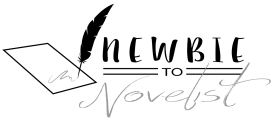A couple weeks ago I wrote up an article with plenty of insights about injecting humor into your narrative. One of those insights happened to be identifying types of humor that you find funny.
Since there are a number of different types of humor, I decided to make your life easier and condense them into a manageable list. Please note that this is based in the world of written fiction, so some styles of humor don’t fully translate from a visual medium to a written medium.
As another reminder from my previous article, do remember that humor is subjective. There are a few literary devices that when used can breed humor, but all jokes can land differently depending on situation and audience.
Let’s dive in…
Types of Humor
Overstatement: AKA exaggeration. AKA hyperbole. This is when you present situations as much greater than they really are. The more ludicrous and ridiculous overstatements tend to be the more humorous.
Understatement: Since we’ve gone over the overstatement, it makes sense that the opposite could be true. With a lesser emphasis on what’s expected, understatements will downplay the situation, especially when the situation is chaotic or ostentatious.
Deadpan/Dry: Similar to understatement, this humor is presented in a very matter-of-fact or expressionless nature. Deadpan can be an entire character shtick, where the character might not intend what they say to be humorous.
Incongruity: AKA surprise. Smooshing two or more not-quite-related ideas together can conflict with expectations and create humor.
Irony: The intended meaning of the word is different from (and often opposite to) the literal meaning. Irony, unlike sarcasm, tends to be ambiguous, bringing two contrasting meanings into play.
Sarcasm/Snark: use of words to either mock, ridicule, or annoy a subject. Can use ironic phrases, but often rely on situations, tone, and mannerisms to derive true meaning.
Self–Deprecating Humor: when the speaker or a character makes fun of himself or herself.
Teasing Humor: While self-deprecating humor can show vulnerability, teasing humor can have a character call out another on his or her flaws/hubris. This type of humor can be enhanced by a couple characters voicing the same teasing observation.
Wordplay: Focuses on word selection and usage. Some words can take on double meanings, can sound similar to other words, or just sound funny (oi with the poodles). This is a general category for any clever turn of phrase or use of language including puns, phonetic mix-ups, obscure word meanings, double entendres, etc.
Banter: a tit for tat dialogue that injects quips that may or may not be depreciating, scathing, or sarcastic. It tends to be full of whit.
Situational Humor: The effect depends on the involvement of the main characters in a predicament or ludicrous circumstances. Essentially, place characters into an outrageous environment and see how they react.
Satire: Using a serious tone to describe a ridiculous topic or event.
Parody: Humor created through imitation or likeness. This capitalizes on utilizing recognizable tropes or characteristics and skewing them for dramatic and comedic effect.
Farce: The show must go wrong! Farcical humor is based upon the occurrence of highly improbable circumstances.
Dark/Morbid Humor: This calls upon the grim and macabre to create humor. Often this will take a lighter note on death, destruction, and disaster.
Juvenile Humor: This is any humor that is childish in nature. It could involve pranks, name calling, teasing, silly words.
How Understanding Humor Can Help
We all know that explaining a joke ruins it. The same can be true by trying to over analyze humor and make it formulaic. So, don’t stress. Having an informational foundation can take some pressure off.
It is much easier to inject comedic moments while writing a scene if you know what type of humor might fit.
Keep in mind that types of humor in a narrative often depend on the character. Some characters can be highly sarcastic and cynical, some could be smart with clever turns of phrase. Understanding your characters and their sense of humor will create a comedic marriage.
And don’t forget that you don’t have to get it right on the first try. Like most aspects of your novel, you can fine-tune your humor in the editing process. I’d recommend getting a non-biased audience to run your humor past and rely on CPs, Alpha, and Beta readers. They can point out any memorable humorous moments and let you know if jokes are working.

If you found this post useful, let me know in the comments below. Message me with any content you would like to see in the future! Don’t forget to subscribe to the Newbie to Novelist Newsletter.

